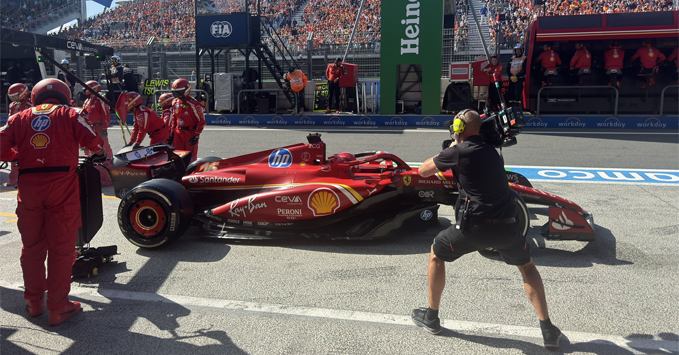Breaking news:Ferrari SF-25 design based on almost completely new concept, but….Read more

Ferrari SF-25 design based on almost completely new concept, but what remains unchanged
The countdown to the reveal of Ferrari’s new SF-25 has officially begun, with the unveiling set for Wednesday, February 19. Team Principal Frederic Vasseur confirmed the information that had been previously reported by Italian website AutoRacer.it regarding the development of project 677. He stated that after three years of data collection, the 2025 car will be completely new. Vasseur also highlighted that only 1% of the SF-24’s components will be carried over to the SF-25, indicating that the new car will be almost entirely designed from scratch based on the knowledge accumulated over the past three seasons. Vasseur emphasized this message to the team, which is led by Loic Serra, Ferrari’s new Technical Director, and includes Diego Tondi, responsible for aerodynamics, and Fabio Montecchi, the Chief Project Engineer. They have implemented bold decisions to ensure that the 2025 season will be a significant improvement, even before the major regulatory changes expected in 2026.
The SF-25 will feature substantial changes to its exterior design, while the interior will undergo more subtle updates. One of the key changes will be improvements to the cooling system, although Ferrari’s highly efficient triangular airbox design is likely to remain unchanged. The SF-24 was already a major step forward from previous Ferrari designs, particularly in its aerodynamics, which were revamped after the team’s struggles with the 2023 car. Experts believe there is still potential in the current regulations, suggesting that significant performance gains can be made if the right path is found. Ferrari’s strategy for 2025 centers on the adoption of the front pull-rod system, which aims to address the tire management problems faced by the SF-24. However, optimizing the redistribution of the car’s mass is a complex task that will require time and careful fine-tuning.
Unlike some other teams, such as Williams, which have made more dramatic changes to the central structure and radiator layout, Ferrari has taken a more measured approach. The rear section of the SF-25 has not undergone significant internal mechanical changes but has instead seen subtle evolution aligned with the team’s goals. The central structure of the car has also remained largely unchanged. Ferrari’s decision not to drastically reconfigure its cooling system contrasts with the approach taken by Red Bull for their 2024 car, which included a complete redistribution of radiators. While this posed challenges for Red Bull, it ultimately resolved cooling issues, especially highlighted by the adjustments made at the Suzuka race. In contrast, Ferrari has opted for a more conservative approach, maintaining the car’s traditional weight distribution while optimizing the existing cooling setup.
As for the 1% of elements from the SF-24 carried over to the SF-25, these include the triangular-shaped hood intake, a design feature that has been a signature of Ferrari’s cars since the F1-75 in 2022, and even earlier with the SF-90. Ferrari continues to avoid the trend toward central cooling systems and instead retains its distinctive airbox “ears” that have become a staple of their cars. Other Ferrari-powered teams, such as Sauber and Haas, have opted for centralizing their car’s mass by repositioning components like the oil and electric radiators along the car’s central axis, but Ferrari has chosen to retain its familiar configuration in the SF-25. This decision allows the team to refine its setup while maintaining the overall character of the
car.




